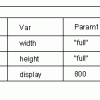 |
How to Merge XML Data with a Database In his article "Data Crunching Tips and Techniques," Greg Wilson taught us how to translate legacy data into XML. In the second half, he explains how to merge new data into an existing database. Developers will always face these types of data crunching problems, and knowing the standard data crunching tools can save you a lot of time. Greg also shares the basic knowledge about relational databases that every developer should possess.
|
|
|
|
Patterns Without Purpose Architectural patterns are a convenient way to design and build your code, but be careful not to bite off more than you can chew. Tod Golding offers advice on avoiding useless layers and letting each pattern earn its way into your architecture.
|
|
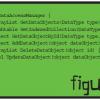 |
Code With Character Use .NET generics to get to know your data types and form more meaningful, trusting, typesafe relationships with them.
|
|
|
|
Staying Out of Code Debt All code is not created equal. Learn from a master of the craft how to spot bad code and mold it into good. Mike wraps up his year-long column with tips for heading off code bankruptcy and leaves us with some final words of wisdom to help us continue to improve our coding craft.
|
|
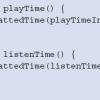 |
Relocate for Reuse All code is not created equal. Learn from a master of the craft how to spot bad code and mold it into good. This month, Mike Clark explains how moving code from one class to another to make it reusable can save you time in the long run.
|
|
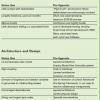 |
Strangling Legacy Code Organizations saddled with legacy web applications often rewrite the applications from scratch. But what if an application could be rewritten a bit at a time by the same team that maintains it? Find out how one team "strangled" out legacy code with a new application—without having to start the rewrite from scratch.
|
|
 |
A Crash Course in Scripting More and more software testing is becoming a technical activity—and that means programming. In the future, simply having domain knowledge won't be enough. Good craftspeople need good tools, and some of the most powerful tools in the tester’s toolbox today are dynamic programming languages like Perl and Ruby. If you aren't familiar with these languages, this article will help you get up to speed and start scripting in no time.
|
|
 |
Faults of Omission Brian Marick is obsessed with faults of omission in software code, and he thinks you should be too. In this Bug Report, Marick describes coding omissions, design omissions, and requirements omissions, and offers some ways to prevent (or at least test) them.
|
|
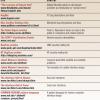 |
A Study in Failures Examples of mistakes, manifestations, and problems help us understand all parts of the software. Brian Marick suggests Web resources that examine software failures.
|
|
|
|
Welcome to Software Testing and Quality Engineering Technical Editor Brian Marick introduces the first issue of STQE magazine. He says the magazine "is for people who get their hands dirty, whether by writing tests, cranking out code, managing others, or--perhaps the hardest task of all--being the internal QA consultant who has no direct authority but must somehow persuade ten projects with impossible deadlines to think strategically."
|
|

